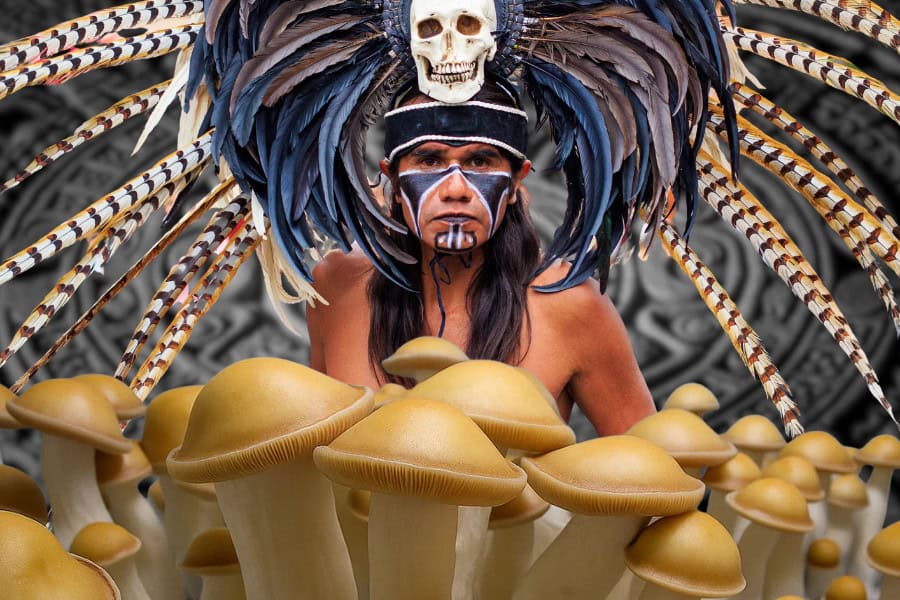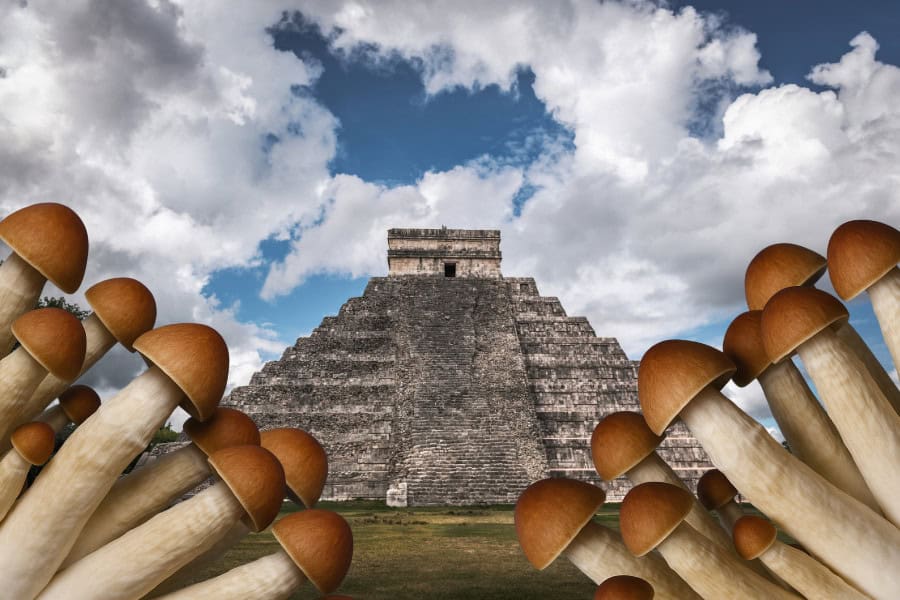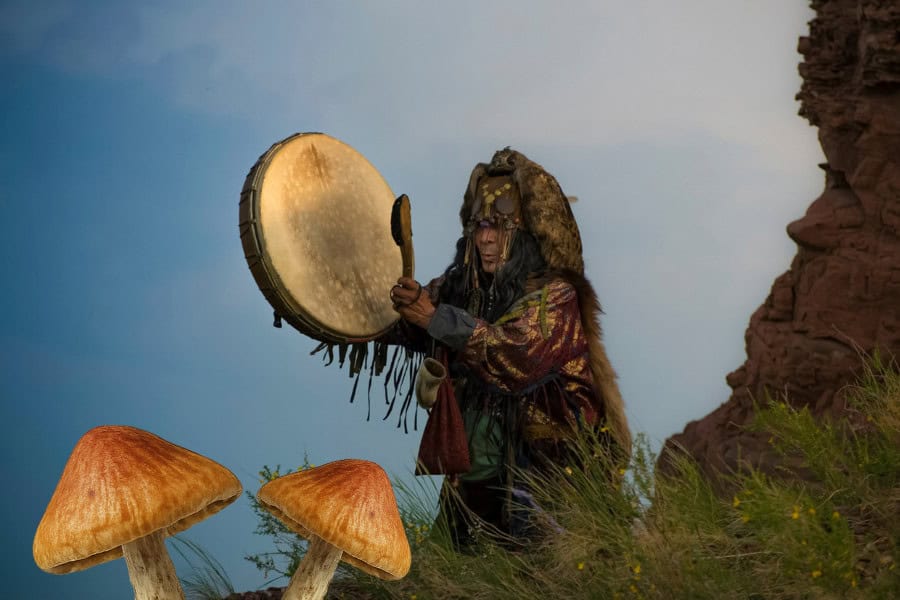Psilocybin in Ancient Rituals: What History Tells Us

For thousands of years, psilocybin mushrooms have held a special place in the hearts and traditions of indigenous peoples. To them, these mushrooms weren’t just another plant growing in the wild, they were sacred allies that opened doors to deeper wisdom, spiritual healing, and connection with the divine. Looking back at how these cultures used psilocybin gives us a clearer picture of its true meaning and offers insights that still matter today as more people turn to psychedelics for healing and growth.
Origins of Psilocybin Use in Indigenous Cultures
The use of psilocybin mushrooms dates back thousands of years, with evidence pointing to their prominence in Mesoamerica, particularly among the Aztec, Maya, and Mazatec peoples. Known as teonanácatl, meaning “flesh of the gods” in Nahuatl, these mushrooms were central to spiritual practices in what is now Mexico and Central America. Archaeological findings, such as stone carvings and codices, suggest their use as early as 1500 BCE, though oral traditions likely extend even further.
Beyond Mesoamerica, psilocybin mushrooms appear in other regions. In Siberia, indigenous groups like the Chukchi used Amanita muscaria, a related psychoactive mushroom, in shamanic rituals. While less documented, some evidence suggests psilocybin-containing species were used in parts of Africa and Europe, particularly in areas where these fungi grew naturally. These cultures recognized the mushrooms’ ability to alter consciousness, viewing them as conduits to the divine or ancestral realms.

Ancient Evidence and Writings
Throughout history, humans have sought ways to connect with the divine, often turning to psychedelics to open pathways into deeper spiritual realms. Archaeological discoveries hint at these ancient practices. In Algeria’s Tassili n’Ajjer caves, paintings dating back around 6000 BCE show figures holding objects that resemble mushrooms, possibly indicating their ceremonial use. Across Central America, artifacts and carvings from early civilizations also point to the ritual use of psilocybin mushrooms in spiritual gatherings.
Writings from ancient cultures add further insight. The Rigveda, one of the world’s oldest religious scriptures, describes a mysterious drink called “Soma,” which many believe contained psychedelic properties. In Greece, the Eleusinian Mysteries, annual initiation rites honoring the goddess Demeter, are thought to have included a mind-altering brew known as kykeon, used to induce visionary states.
Taken together, these findings suggest that incorporating psychedelics into spiritual and religious practices was not limited to one region but rather formed part of a global tradition, helping people seek meaning, healing, and connection beyond ordinary perception.
The Role of Psilocybin in Spiritual and Healing Practices
Psilocybin’s psychoactive effects made it a cornerstone of spiritual and healing traditions. Indigenous shamans and healers used these mushrooms to access altered states of consciousness, which they believed facilitated communication with spiritual entities, ancestors, or deities. The vivid visions and heightened emotional awareness induced by psilocybin were seen as pathways to wisdom, guiding communities through challenges and fostering a sense of unity.
Psilocybin as a Tool for Divination
In many cultures, psilocybin mushrooms were employed for divination, a practice aimed at gaining insight into the future or resolving communal disputes. Among the Mazatec, shamans consumed mushrooms during nighttime ceremonies, interpreting visions to offer guidance on matters like harvests, conflicts, or spiritual imbalances. These sessions, often held in darkened spaces to enhance introspection, were guided by chants and prayers, creating a sacred atmosphere. The mushrooms’ ability to amplify intuition and reveal hidden truths made them invaluable for decision-making and prophecy.
Healing and Medicine in Ancient Traditions
Beyond divination, psilocybin played a significant role in healing. Shamans used the mushrooms to diagnose and treat physical, emotional, and spiritual ailments. The Mazatec, for instance, believed that teonanácatl could reveal the root causes of illness, often tied to spiritual disharmony. During healing ceremonies, patients might consume small doses alongside the shaman, who guided them through visions to confront suppressed emotions or traumas. This holistic approach, blending psychological and spiritual healing, mirrors modern therapeutic uses of psilocybin for conditions like depression and anxiety.
Rituals Involving Psilocybin
Rituals involving psilocybin were highly structured, reflecting the reverence these cultures held for the mushrooms. Among the Aztecs, ceremonies were often led by priests or shamans in sacred spaces, such as temples or natural settings like caves. Participants prepared through fasting or purification rituals, ensuring a clear mind and body. The mushrooms were consumed with intention, often accompanied by offerings of incense, flowers, or cacao.
The Mazatec maintained similar practices, with ceremonies typically occurring at night to minimize distractions. The shaman, or curandero, would ingest the mushrooms alongside participants, chanting or singing to guide the experience. These rituals emphasized community, with participants sharing insights and strengthening social bonds. The careful preparation and communal focus underscore the mushrooms’ role as a sacred tool, not a recreational substance.

Archaeological and Anthropological Evidence
Evidence of psilocybin use comes from a blend of archaeological discoveries and anthropological accounts. In Mesoamerica, stone carvings known as “mushroom stones,” dating to 1000–500 BCE, depict figures holding fungi, suggesting their ritual significance. Codices, such as the Mixtec Vienna Codex, include references to mushrooms in ceremonial contexts. Spanish chroniclers, like Bernardino de Sahagún, documented Aztec use of teonanácatl in the 16th century, though colonial suppression often obscured these practices.
Anthropological studies in the 20th century, particularly by ethnobotanist R. Gordon Wasson, brought renewed attention to psilocybin rituals. Wasson’s work with Mazatec shaman María Sabina in the 1950s revealed the continuity of these traditions despite centuries of cultural disruption. Oral histories and surviving practices among indigenous groups further corroborate the mushrooms’ longstanding role in spiritual and healing contexts.
Final Word
The history of psilocybin mushrooms reveals a profound legacy of spiritual exploration and healing. From the sacred rituals of Mesoamerica to the shamanic practices of Siberia, these fungi have long served as bridges between the human and the divine. Their cultural significance, rooted in reverence and intention, offers a blueprint for modern use, reminding us to approach psilocybin with care and respect.
Just desire to say your article is as astounding. The clarity on your put up is simply excellent and that i could think you’re an expert on this subject. Well along with your permission let me to grasp your feed to stay up to date with imminent post. Thank you a million and please continue the rewarding work.
Super-Duper website! I am loving it!! Will be back later to read some more. I am bookmarking your feeds also.
I think other website proprietors should take this site as an example , very clean and excellent user pleasant layout.
There is obviously a bundle to know about this. I believe you made various nice points in features also.
Great wordpress blog here.. It’s hard to find quality writing like yours these days. I really appreciate people like you! take care
Youre so cool! I dont suppose Ive learn something like this before. So good to seek out somebody with some authentic thoughts on this subject. realy thanks for starting this up. this website is something that is needed on the internet, someone with a bit of originality. useful job for bringing one thing new to the internet!
I like this web blog so much, saved to fav. “Nostalgia isn’t what it used to be.” by Peter De Vries.
Great line up. We will be linking to this great article on our site. Keep up the good writing.
You made some decent points there. I looked on the internet for the issue and found most guys will approve with your blog.
Hi! I’m at work browsing your blog from my new iphone 4! Just wanted to say I love reading your blog and look forward to all your posts! Keep up the superb work!
It?¦s actually a cool and helpful piece of information. I am happy that you just shared this helpful information with us. Please keep us informed like this. Thank you for sharing.
I’m still learning from you, as I’m making my way to the top as well. I absolutely enjoy reading all that is written on your blog.Keep the aarticles coming. I liked it!
I’ve been exploring for a little for any high quality articles or blog posts on this kind of area . Exploring in Yahoo I at last stumbled upon this website. Reading this information So i am happy to convey that I have an incredibly good uncanny feeling I discovered just what I needed. I most certainly will make certain to don’t forget this website and give it a look regularly.
I like this post, enjoyed this one regards for putting up.